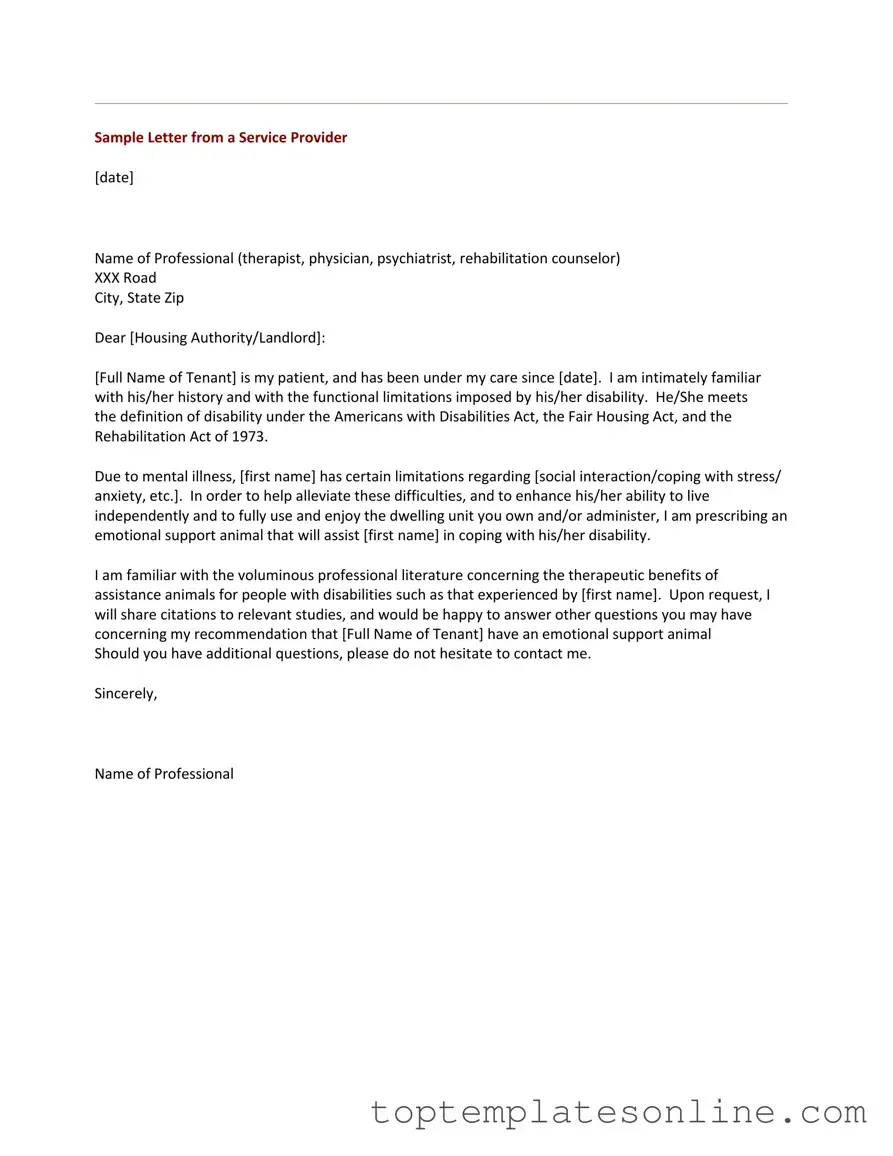Fillable Emotional Support Animal Letter Form
The Emotional Support Animal (ESA) Letter form is a document that allows individuals to validate the need for an emotional support animal in their lives. This letter, typically issued by a licensed mental health professional, provides essential support for those seeking to enhance their mental well-being through the companionship of an animal. Understanding the significance of this form can help individuals navigate housing and travel regulations while ensuring their emotional needs are met.
Customize Emotional Support Animal Letter Here
